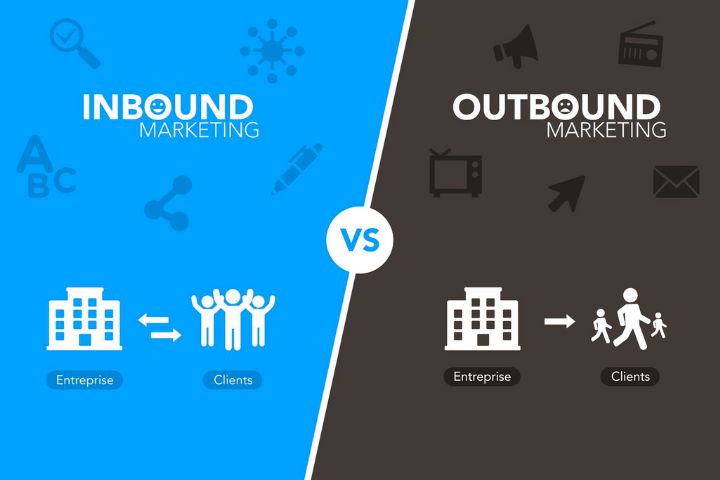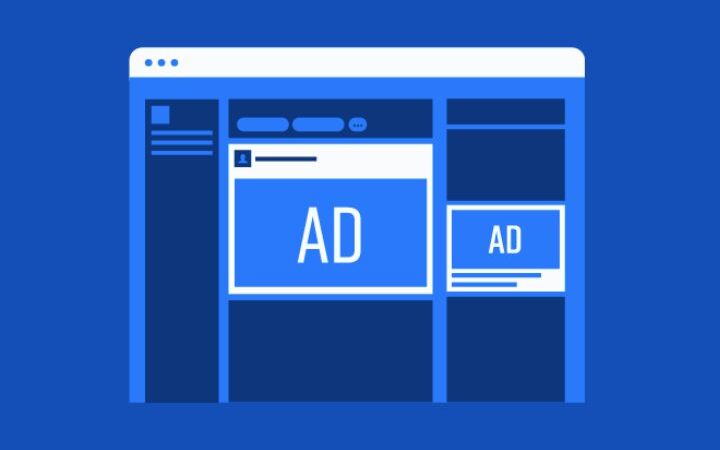Inbound vs Outbound Marketing – What Marketing Strategy For Your Project?

Inbound vs Outbound Marketing : Do you want to promote your project, increase the audience of your website, and find new customers? There are different marketing approaches, which can be grouped into two main families: Inbound and Outbound Marketing. You’ve probably heard of these two concepts before. Moreover, if you are reading this article it is probably because you are looking to know the differences between the two approaches.
That’s good, this article is for you. We will start by defining Inbound on the one hand and Outbound Marketing on the other hand. We will then explain how to choose the right marketing strategy.
Table of Contents
The Difference Between Outbound And Inbound Marketing
Inbound marketing and Outbound marketing define two very different approaches to marketing. Before deciding which of the two approaches to choose, it is worth recalling their definition.
#1 Definition of Outbound Marketing
Outbound Marketing is the traditional, classic approach to marketing. It brings together all the techniques of reaching consumers and potential customers where they are. Here are some examples of techniques related to outbound marketing:
- Advertising on search engines: Google AdWords, Bing Ads, etc.
- Advertising on social networks: Facebook Ads, LinkedIn Ads, Twitter Ads…
- Email marketing.
- The distribution of flyers.
- Radio and television advertising.
- Advertising posters and print advertising.
- Attendance at events (trade shows, etc.).
- Telephone canvassing.
- Door-to-door.
As we can see, advertising is the flagship technique of Outbound marketing. Advertising makes it possible to understand the outbound logic, which consists of “pushing” messages on the channels where the potential target is present. Outbound marketing could be translated as “outbound marketing”.
Outbound marketing is the historical approach to marketing.
The effectiveness of outbound marketing is not to be demonstrated. He ensured the glory of marketing for decades. However, the effectiveness of outbound marketing is offset by problems related to marketing pressure. The general over-solicitation of consumers tends to reduce the impact of advertising campaigns. The other limitation of Outbound marketing is that you are inevitably led to reach people who are not interested in your offer. Some of the money invested in your marketing strategy is in a sense thrown out the window. Smart insights has shown that today the click-through rate on banner ads does not exceed on average the… 0,05%.
Another characteristic of Outbound marketing is its nature that could be described as interruptive, even if the word is not very elegant. Radio and TV commercials interrupt programs. Door-to-door and telephone canvassing interrupted people in what they were doing. Hence the potentially aggressive side of Outbound campaigns. Consumers have developed strategies to no longer be interrupted: they zap ads, hang up on canvassers, install ad blockers to block ads on the internet.
#2 Definition of Inbound Marketing
Inbound marketing and new marketing. The word was coined by HubSpot. The software publisher defines this new marketing approach in these terms:
We see the difference between the two approaches. While outbound marketing will look for the customer, pushing messages on the right channels, inbound marketing seeks to attract customers to itself. It is no longer the company that goes to its potential customers. It is the potential customers who are attracted to the company, via content. The symbol of inbound marketing is the magnet. That of Outbound marketing is the speaker.
Basically, content creation is at the heart of inbound marketing. The link is so close that “content marketing” and “inbound marketing” are often used synonymously.
The objective, whatever the channel or format used, is to create content likely to attract and interest its target customers, content that meets their problems and highlights the advantages of the offer offered by the company. The performance of inbound marketing depends largely on the quality of the content used. Here are some examples of “techniques” or types of content related to inbound marketing:
- Webinars
- Newsletters
- Infographics
- YouTube videos (such as tutorials for example)
- Ebooks
- Opt In emailing
- White papers
- SEO, that is to say all the techniques aimed at optimizing the referencing of its articles / content on search engines.
Inbound marketing is a response to a change in consumer habits. More autonomous and independent, today’s consumers no longer want to let products be imposed. They are less and less sensitive to advertising. They want to find by themselves the product or service that meets their needs and expectations, using the internet in particular. The development of inbound marketing is inseparable from the development of new communication technologies: internet, social networks, smartphones.
There is an important difference between the two approaches in terms of the mode of communication. Outbound marketing is linked to the world of mass media: TV, radio, magazines, etc. It is the company that addresses a crowd of prospects, in a form of one-way communication. Prospects can’t respond to messages from the company. In inbound marketing, communication is a two-way street.
Prospects can respond and enter into an engagement process. They can send an email, leave a comment on the blog, post a message on social media, leave a review and contact the company in different ways. By focusing on inbound marketing, you give a voice to your prospects, you submit to their opinions, to their criticisms. So you can’t do just anything. Transparency and honesty are two essential qualities in an inbound approach. You can’t lie about your products or services.
All of this can be scary at first, but it’s actually a boon for you. The fact that your customers interact with your company on your products and services feeds a more intense customer relationship, generating loyalty. This two-way mode of communication also allows you to identify more easily and effectively the needs and expectations of your target.
Outbound VS Inbound Marketing: Which Strategy To Choose?
You want to promote your project, your services, your products and you hesitate between being accompanied by an inbound marketing agency and Outbound marketing (advertising )? The hesitation is legitimate. Both approaches have their strengths. It is not always easy to choose one or the other. In our opinion, the choice depends essentially on three criteria: your market, your product (or more broadly, your offer) and your objectives.
Discover The Best Rated Web Agencies According To Their Specialty
#1 Your market
You need to have a clear vision of your target market and study the socio-demographic characteristics of your potential customers. You must also have a clear knowledge of their needs and expectations. Inform you about their purchasing habits and behaviors. All this information will allow you to identify the marketing approach to favor, as well as the channels to use to reach your target:
- Favor inbound marketing if your target customers prefer to do research before buying and / or spend a lot of time on the internet to get informed. Example of targets concerned: Millennials, Techos…
- Favor Outbound marketing when you target a clientele that buys impulsively and without doing research OR when your target customers prefer to talk to a real person (a salesperson for example) before buying OR when your target is used to inquiring from traditional sources of information (TV, radio, print magazines .). Examples of targets concerned: Generation X, baby boomers.
#2 Your product
The choice also depends on your product, the offer you market. We advise you to focus on inbound marketing if you want to promote products:
- Which requires a certain period of reflection. For example: computers, cars, in short, expensive products.
- Which are complex, whose benefits are not obvious and need to be explained. For example: niche dietary products.
- Who are new to the market and whose usefulness people are unaware of.
- Who have to face a lot of competition. For example, cars.
Outbound marketing can make sense if you’re marketing products:
- Whose purchase does not require a long period of reflection. For example: a hamburger.
- Which are simple and well known to the public, which do not require explanations. For example: mobile phones.
- Who have followers. For example: Apple products.
Here is a (real) story that allows us to illustrate the subject. Coca-Cola has decided to launch a coca-Cola with a strawberry taste. The famous firm has decided to rely only on inbound marketing to promote its new product.
The marketing teams in charge of promoting this new flavor started by writing blog posts extolling the merits of strawberry and highlighting the Coca-Cola Strawberry. They quickly managed to position themselves in first place in Google on the keyword “Strawberry coke”. Except that no one was typing this query into Google. And for good reason: no one knew about the existence of this new product. Clearly, for this type of product, inbound marketing does not make sense. No one does any research on the internet to find out whether to buy Coca-Cola or Pepsi instead. Outbound marketing is much more suitable in this case.
#3 Your goals
Last element to take into account, last piece of the puzzle: your marketing objectives. Do you want to achieve very short-term results or, on the contrary, do you want to focus on a long-term strategy? The choice between Outbound and Inbound Marketing depends in part on your goals.
Choose inbound marketing instead if:
- Your goal is to collect highly qualified leads.
- You can afford to wait to collect these leads and get new ones from customers.
- You want to set up a long-term strategy that will allow you to generate leads continuously over a long period of time.
- You have sufficient resources (especially human resources) to quickly create high value-added content (blog articles, white papers, infographics, webinars, etc.).
Conversely, outbound marketing is probably more suitable if:
- Your goal is to generate leads quickly.
- You opt for a short-term strategy.
- You have the money to invest in an outbound marketing strategy. You should know that Outbound marketing techniques cost on average more to implement than inbound techniques. A television advertising campaign costs incomparably more than financing the writing of blog posts…
- You want to get results quickly.
Let us take another example. Let’s say you’ve just developed SaaS software. Let’s say a software that allows sales team managers to record calls. You work part-time as an employee to finance your project. You don’t have enough money to invest in an outbound campaign, but since you have a part-time job, you have time to develop and promote your project.
There is no emergency, you have income. In this kind of situation, inbound marketing is clearly to be preferred. For example, you can publish a blog post every two or three days and an ebook every month. This will allow you to drive traffic to your website and generate your first subscriptions. Eventually, you can invest the money earned from your first customers in an outbound strategy: an AdWords campaign for example.
These three factors (your market, your product, your goals) will allow you to decide which strategy to choose. The important thing is to be aware that the two approaches do not contradict each other. They can complement each other perfectly, as we have just seen in this last example.
Over time, your market, your product and your objectives may evolve, which may involve an evolution of your approach, a change in your marketing mix. We also advise you to test the different approaches and techniques to identify the most effective. We must not be dogmatic, but pragmatic. Experience. Measure. Iterate.






